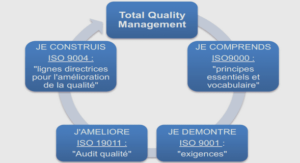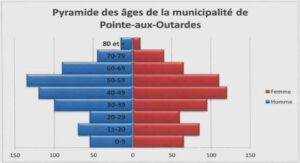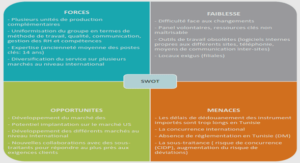Characterization of the stress state
Stress invariants Throughout our discussion, a clear description of the stress state is important. The frame invariant part of the stress is described through the first invariant of the Cauchy stress tensor , and the second and third invariants of the corresponding deviatoric stress tensor, ( ⁄ ) , 8 Chapter 2. Preliminaries ( ) (2-1) (2-2) and ( ) (2-3) Note that the hydrostatic stress and the von Mises equivalent stress are respectively proportional to the first and second invariants, (2-4) √ (2-5) The stress state may be characterized through two dimensionless functions of the above invariants. We define the stress triaxiality as the ratio of the mean stress and equivalent von Mises stress, √ (2-6) with . The normalized third invariant is written as (Ilyushin, 1963, [84]) √ (2-7) and lies in the range ; it characterizes the position of the second principal stress with respect to the maximum and minimum principal stresses and . Alternatively the third invariant can be described in terms of the so-called Lode angle parameter ̅ ( ) (2-8) 2.1. Characterization of the stress state 9 Figure 2-1: Characterization of the stress states in terms of stress triaxiality and Lode angle parameter. The blue, black and red lines highlight the plane stress states as described by Eq. (2-16). According to the definition above, the Lode angle parameter approximates the negative Lode number (Lode, 1925, [113]), ̅ (2-9) Note that the principal stresses , and are got back using ̅[ ( ̅)] (2-10) ̅[ ( ̅)] (2-11) ̅[ ( ̅)] (2-12) with the deviator dependent functions 10 Chapter 2. Preliminaries ( ̅) ( ( ̅)) (2-13) ( ̅) ( ( ̅)) (2-14) ( ̅) ( ( ̅)) (2-15) Throughout this manuscript, the term stress state is employed to make reference to the pair of parameters ( ̅). Well-known stress states that we will refer to frequently are: Uniaxial tension ( ̅ ) Pure shear ( ̅ ) Generalized shear ( ̅ ) Axisymmetric tension ( ̅ ) Axisymmetric compression ( ̅ ) A representation of the ( ̅) stress state space is depicted in Fig. 2-1.
Plane stress condition
In sheet materials, the plane stress condition often prevails: one of the principal stress directions is parallel to the sheet thickness direction and the corresponding principal stress is equal to zero. In case of plane stress, the stress triaxiality and the normalized third invariant are uniquely related according to the relationship ( ) (2-16) In this investigation we focus more specifically on stress states in the vicinity of biaxial tension, i.e. plane stress states between uniaxial tension and equi-biaxial tension. In this case the stress triaxiality varies between 1/3 (uniaxial tension) and 2/3 (equi-biaxial 2.1. Characterization of the stress state 11 Figure 2-2: Relation between the stress triaxiality , the Lode angle parameter ̅and the stress ratio in case of biaxial stress states. tension). At the same time, the third invariant decreases from 1 (uniaxial tension) to -1 (equi-biaxial tension). Denoting , the principal values of the Cauchy stress tensor, the stress state in biaxial tension is then fully characterized by the biaxial stress ratio (2-17) with . The stress triaxiality then reads √ (2-18) Figure 2-2 depicts the relationship between the stress triaxiality (black line in Fig. 2- 2) and the Lode angle parameter ̅(blue line in Fig. 2-2) to the biaxial stress ratio in case of a biaxial stress state.
Ductile fracture modeling
Ductile fracture is the result of a progressive material deterioration occurring during plastic deformation, generally identified as the nucleation and growth of microvoids that ultimately link to form cracks. The early investigations of McClintock (1968, [119]) and Rice and Tracey (1969, [152]) on the evolution of cylindrical and spherical holes in ductile matrices have set the foundation for numerous studies on the micromechanics associated with void growth. The most prominent is that of Gurson (1977, [70]), who proposed a porous plasticity model based on the micromechanical analysis of a thick spherical shell subject to hydrostatic pressure. The model describes the growth of voids and its influence on the material’s stress carrying capacity at large mean stresses (but becomes less accurate for shear loads). The original Gurson model has been repeatedly modified to account for additional processes responsible for the material deterioration and subsequent ductile fracture: void nucleation (e.g. Chu and Needleman, 1980, [35]), loss of load-carrying capacity associated with void coalescence (e.g. Tvergaard and Needleman, 1984, [181]), enhanced strain hardening models (e.g. Leblond et al., 1995, [102]), void shape effects (e.g. Gologanu et al., 1993, [67]; Gologanu et al., 1994, [68]; Garajeu et al., 2000, [62]; Pardoen and Hutchinson, 2000, [146]) and plastic anisotropy (e.g. Benzerga et al., 2004, [18]). The reader is referred to Lassance et al. (2007, [100]) and Benzerga and Leblond (2010, [19]) for a comprehensive review of successive improvements of the Gurson model. Gurson type of models are not only used to describe macroscopic plastic behavior of materials with small void volume fractions, but also to predict ductile fracture assuming that fracture occurs as the void volume fraction reaches a critical value. As a result, “traditional” Gurson models are unable to predict fracture under shear-dominated loading conditions, where the void growth mechanism is inactive. Numerical investigations of an initially spherical void contained in a cubic unit cell submitted to various tri-axial loadings (e.g. Zhang et al., 2001, [196]; Gao and Kim, 2006, [59]) showed that the third stress invariant (or Lode parameter) has a strong influence on void shape evolution and on coalescence. The influence of the third stress invariant on the ductility of metals is 1 This Section is reproduced from: Dunand, M. and D. Mohr (2011). « On the predictive capabilities of the shear modified Gurson and the modified Mohr–Coulomb fracture models over a wide range of stress triaxialities and Lode angles ». Journal of the Mechanics and Physics of Solids 59(7): p. 1374-1394. also shown experimentally (e.g. Barsoum and Faleskog, 2007, [15]). This particular shortcoming of Gurson models has been addressed by the recent models of Xue (2008, [193]) and Nahshon and Hutchinson (2008, [130]). The latter consider the void volume fraction as damage parameter, and introduce a dependency of the damage evolution on the third stress invariant. This empirical modification has been introduced in an ad-hoc manner to deal with the material deterioration due to void distortion and inter-void linking under shearing. As a result, the Nahshon-Hutchinson model can predict failure under shear-dominated loading, such as during the cutting of sheet metal (Nahshon and Xue, 2009, [131]). However, Nielsen and Tvergaard (2009, [137]) found that this modification is inadequate in the case of high stress triaxialities, compromising the predictive capabilities of the original Gurson model for loading conditions where void growth is the main damage mechanism. Consequently, Nielsen and Tvergaard (2010, [138]) proposed a slight modification of the Nahshon-Hutchinson model, making the damage accumulation under shear-dominated stress states active only for low stress triaxialities. It is noted that these two recent shear-modified Gurson models do not account for the effect of void distortion at large shear strains. Micromechanical models that are able to deal with general ellipsoidal void shape evolution are still at an early stage of development and require further validation (e.g. Leblond-Gologanu, 2008, [101]).





